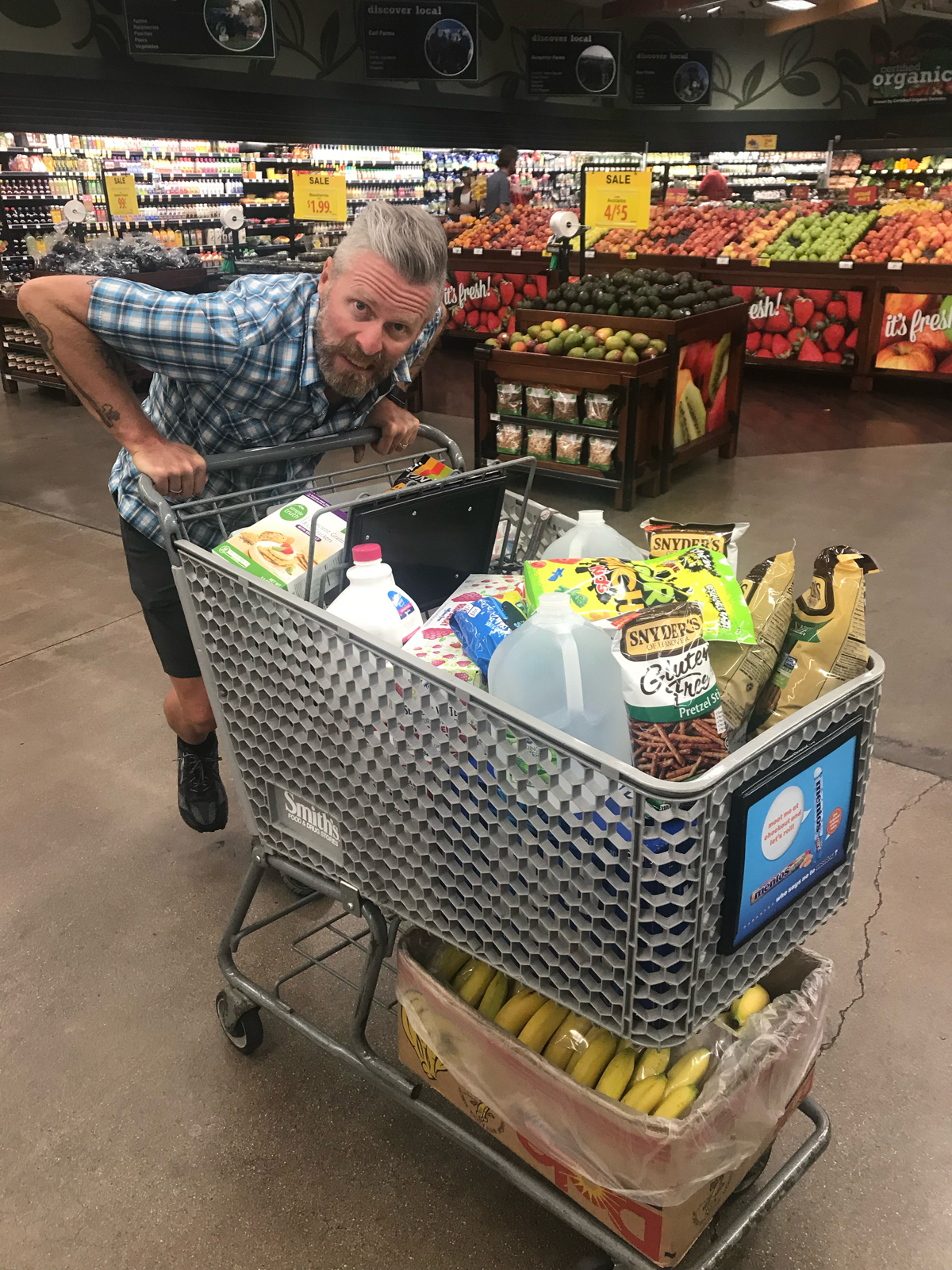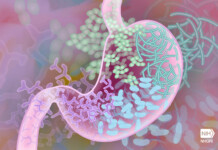By Breanne Nalder Harward, MS, RN — It’s that time of year when the season is winding down, school is back on, and winter is approaching. These are all examples of times when we might let our nutrition discipline slip and revert to unhealthy eating patterns, specifically in the snack category. Eating in between meals can help us obtain and meet calorie goals for the day, fuel before or after workouts, and sustain energy levels throughout the day. Read on to learn healthy snack ideas, timing for snacks around exercise, and suggestions for healthy snacks on the go.
Every athlete knows that no two days are the same. Some days require higher calorie intake that others, depending on training volume and/or intensity. There are many factors to consider when selecting our snacks: hunger level, time of day, pre- or post-workout and weight goals. But when is the best time to eat certain foods? Eating too heavy of a meal before a workout can leave you feeling sluggish as digestion takes priority and blood goes to your guts rather than working muscles. Eating too little before a workout can result in decreased energy, limited performance and can lead to overeating afterwards, which can also cause discomfort.

Adapt the mindset of fueling your body for performance! It is easier for the human body to consume nutrients throughout the day as opposed to trying to consume everything in three meals. This is where snacks come in to play. Let’s break down the macros. You’ll hear me like a broken record that carbs are our main source of energy. Below is a more detailed description of when to consume simple carbohydrates vs complex carbohydrates. Fat, our second source of (sustained) energy, helps keep you feeling full longer and decreases inflammation.
Eating foods that are high in healthy fat (like nuts, avocados, or fish) are good when you won’t be training within 1-2 hours, such as dinners or snacks after breakfast, so they have time to digest and do their job.
Protein is not a source of energy, though it contains amino acids which are the building blocks that repair and rebuild worn down tissues post workout. So, it’s important to incorporate proteins into each snack and meal, but in smaller doses at a time, specifically 10-20g is what our bodies can utilize in any bolus of food. Try a PB and honey sandwich as a pre-workout snack, veggies, and hummus midday, and some Greek or cashew yogurt with fresh berries as an evening healthy treat.
Complex vs Simple Carbs
Slower-digesting carbohydrates (known as complex carbohydrates) provide sustained energy, even blood sugar levels, and help fuel the body so muscle repair can continue using protein. Examples include sweet potatoes, brown rice, and whole grains. Eating oatmeal at breakfast or quinoa at dinner will help keep blood sugar levels stable, allowing for better mental alertness and decreased cravings of sugary or salty foods at night. Not only does eating whole grains after training help the body to prioritize protein for muscle building, it also supplies sustained brain fuel while sleeping.
Simple sugars are what we need for the quick/instant energy that we need an hour before and throughout a workout, ride, or race. They cause less GI distress because there is less of the grain to breakdown. Be sure to take in 30-60g of carbohydrate through simple sugary foods or sport drinks, gels, chew to keep the engine burning.
Essentially, consuming simple sugars before and during exercise and complex carbohydrates afterward helps avoid the highs and lows in blood sugar. Eating simple or “empty” sugar when you are just sitting around cause the body to feel hungrier sooner, and whatever you don’t burn via exercise gets converted and stored as … fat! Snacking on something quick and easy (like candy or chips) then causes energy to spike and drop, continuing the cycle and not optimally preparing the body for training.
So again, simple sugars are good for right before and during training as the body needs quick fuel to help prepare and repair, helping allow for protein to repair muscles and the carbohydrates to fuel the rest of the body.
Before, During and After Training Snacks
Pre-workout snacks help fuel your muscles by providing them with quick energy for any exercise (endurance or strength training) by topping off muscle glycogen stores, which help provide instant energy and allow for increased performance throughout the duration of the workout. Snacks before a workout should be light (easily digestible so as not to cause any cramping, gas, or other discomfort during exercise), higher in quick burning carbohydrates and protein and less fat. Fat can cause an upset stomach due to its slow releasing time from the stomach into the GI tract.
This is a great time to talk about utilizing electrolyte mix in your bottles as part of your strategy to get simple sugars during exercise. Another thing you’ll hear me talk about endlessly is consumption of calories and electrolytes through hydration the whole time you’re riding. This is because your body is constantly using and releasing water and salts (it’s called sweat!) when turning the pedals. So, if you drink those things back continually, you are replenishing as you go. It’s also easier to keep hydration balance when you get your sodium, potassium, magnesium, etc. as your body uses it, along with ~30g of carbohydrate per bottle. These products are designed to improve your performance and avoid GI distress, so make it a staple in your routine to drink a bottle of mix per hour.
Post workout snacks should be higher in protein and carbohydrates than fat. You want carbohydrates as they help your body prioritize the protein to rebuild and repair muscle and tissue damage from the workout. This is why protein shakes have become so popular—they have the carbs from the milk and protein to help muscles repair. Drinks are also easier and faster to consume after a workout, and nutrients are more easily absorbed in liquid form than solid form. Consuming a post-workout snack with carbohydrates also helps replenish the glycogen stores depleted during exercise, which allows the body to have more fuel in the tank for the next workout.
Light, Moderate and Heavy Snacking
– Light snacking is good for days when you are not training and still need to keep energy levels high. On days you ride 60 mins or less or have cross training activities, enjoy fresh or frozen fruit, yogurt, veggies, hummus, rice crackers, edamame, etc.
– Moderate snacking is good for days when you are training, but the volume or intensity is not too high (1-3 hours). Snack ideas that help your body top off fuel resources and can aid in recovery after training include apple and string cheese, toast with peanut or almond butter, trail mix, oatmeal, popcorn, jerky, and of course smoothies.
– Heavy snacking is also like eating a mini meal. It is usually larger in size and contains larger amounts of carbs, fats, and/or proteins depending on the time of day consumed. These snacks are good for when training volume and intensity are high, thus meaning your body’s need for fuel is greater. On days you ride 3+ hours, snack on sandwiches (PB and honey, deli meat with veggies, tuna, grilled chicken), cheese and crackers, omelets with veggies and avocado, quinoa or oat cereal mixed with fruit and banana.
In summary, snacking throughout the day, especially for athletes, is important as it helps maintain blood sugar levels, keeps energy levels high, and prevents overeating at meals or late in the evening. Healthy snacking helps athletes feel fuller longer to make healthier choices at mealtimes instead of eating “naughty” foods when hunger strikes. When we’re talking about weight control and metabolism, healthy snacking is crucial in managing hunger throughout the day instead of eating heavily at night when more food can be stored as fat since fewer calories are burned while sleeping. What we put in our bodies directly impacts performance, so let’s take snacking as seriously as we do our training!








